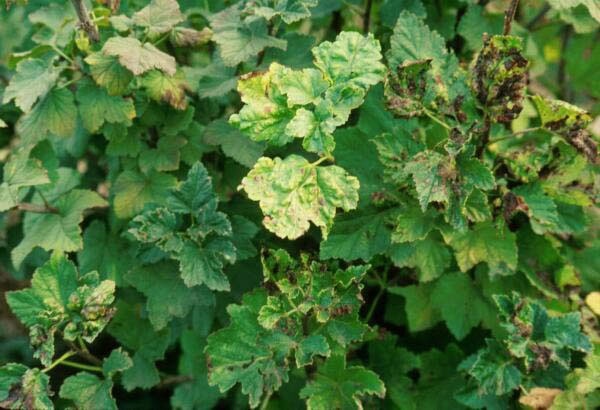Each currant berry is an incomparable storehouse of vitamins, a source for tasty homemade preparations, fruit drinks and filling for pies. Without exaggeration, a good, abundant harvest of puffed bellied shiny berries is the desire of any gardener. It is quite real, with the correct selection of bushes, taking into account the climate, and competent care for them.
But, the currant has a serious enemy - parasites that seriously reduce yields, or generally nullify all the efforts of the dacha. The main pests that are prescribed on berry bushes are aphids and kidney mites. The first signs of plant contamination can be dried or folded leaves and shoots.Let's see why there are such pests, what to do and how to deal with them?
Table of contents
Why do the currant leaves turn yellow and dry
Reasons bush diseasein which leaves and whole fresh shoots begin to dry, most often there are fungal infections and pests.
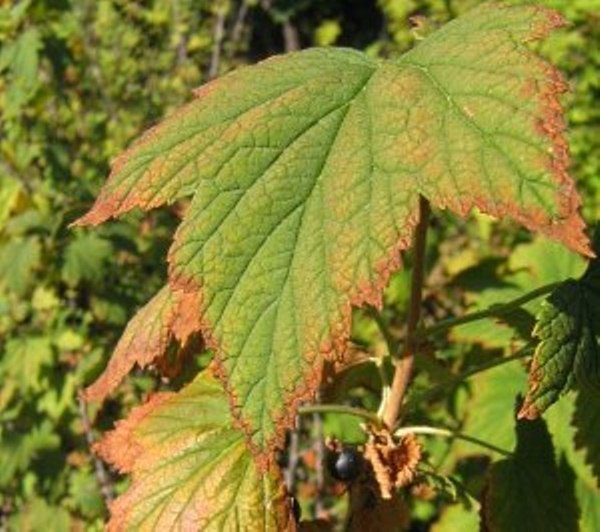
The main parasites that harm currants are:
- spider mite;
- kidney mite;
- currant glass bowl;
- currant leaf gallitsa;
- currant shoots gallitsa;
- leaf gall aphid;
- gooseberry sprout aphid.
Currant is sick from the following infections:
- sphere library;
- anthracnose;
- septoriosis;
- columnar rust;
- glass rust.
Most often, currant bushes suffer from various aphids and kidney mites.
Kidney tick, methods of dealing with it
This pest lives on a currant bush all its life. A very small insect, the length of the female’s body is only 1.5-3 mm, and the males are even smaller. Insects overwinter and lay eggs in the plant buds. When the larvae hatch, they become little room, respectively, they move to the neighboring buds, capturing new shoots. Thus, the whole blackcurrant bush is affected, and then the next currant bushes and other plants - raspberries, gooseberries, and others are falling ill.
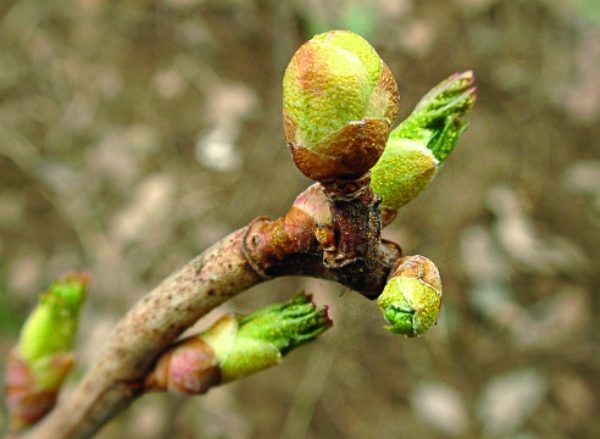
Of course, affected by the pest, the escape does not develop. If such branches grow, only in a mutated form. Accordingly, the harvest decreases. In addition to reducing the number of berries, mites cause other harm. They are a vector of many infections that can affect plants, including viral curly or marbling.. In this disease, the leaves curl and become sticky, almost like when aphids are affected.
There are a lot of methods for dealing with mites on currants:
Boiling water
The way to solve the problem is the most environmentally friendly and with minimal cost. The method is quite effective - when all the larvae die, and the bush becomes only stronger and stronger.
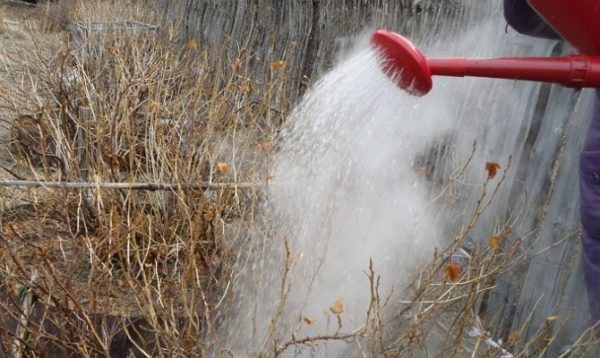
The use of boiling water has its own nuances:
- no need to use boiling water enough temperature in 60-80 degrees;
- branches will be more convenient to pour, if tie them together;
- ticks begin activity with the first warm rays if the bush has already started to bloom, then it is impossible to water it with boiling water. Processing must be done before the appearance of "green haze";
- douche can also additionally spend late autumn.
Manual removal
This method requires concentration and patience. Sort the kidneys in order to remove the tick should be in early spring, before their disclosure.
This method has two significant drawbacks.. Firstly, it is very difficult to distinguish a visually healthy kidney from the one in which the larvae lurked. Secondly, the probability of cutting full-bodied healthy shoots is great, especially at the end of the inspection of the plant.
When choosing this method, all removed buds must be collected in one bucket and burned.
Sulfur Chemicals
The most popular and effective products based on sulfur are:
- colloidal sulfur;
- lime-sulfur decoction.
If the plant is severely affected, then you need to prepare a solution of sulfur in the proportions of 10 grams per 1 liter of water, and process the plant with them. Shrubs are treated with sulfur twice.:
- before flowering or at the beginning of it, use 2% solution;
- after flowering - 1% or 1.5% blend with sulfur.
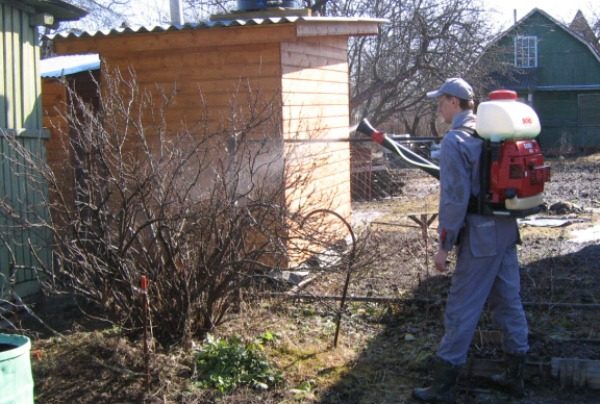
There is a significant risk of staying a year without processing this way, however these chemicals completely destroy both the tick itself and fungal infections. It is important to follow the recommendations specified in the instructions for chemicals to comply with safety measures when working with him.
Pruning
This is an extreme, cardinal measure. If a tick suddenly turns out to be resistant to everything in the world, and this, though very rarely, but it happens, the plant is cut off at the root in late autumnOr else it is completely dug out, that is, completely destroyed.
Folk remedies and methods
Has long been with mites fought with garlic. He was simply planted around the bushes, creating a kind of parasite fence.
Also, the affected shoots doused with steep garlic decoction - 200-300 grams of peeled garlic per 10 liters of water.
If flowering has already begun, the bushes are sprayed with decoctions of such plants as:
- tobacco is a plant, but the tobacco that is used in production is also suitable;
- dandelion;
- Walnut.
The use of simple tea brewing has also proven itself well.
There is nothing better than acaricides for the prevention of tick activity.. This is a modern line of broad-spectrum chemical agents, which means helping not only with tick control, but also with other pests and a number of diseases. The drugs are presented very widely in any of the shops for gardeners and are a complete alternative to sulfur, having its effect, but without harming the bush.
Aphids on white, black and red currants, how to fight?
If blisters appeared on the leaves of red or white currants, and black leaves curled up into tubes. This suggests plant damage by a parasite like aphid.
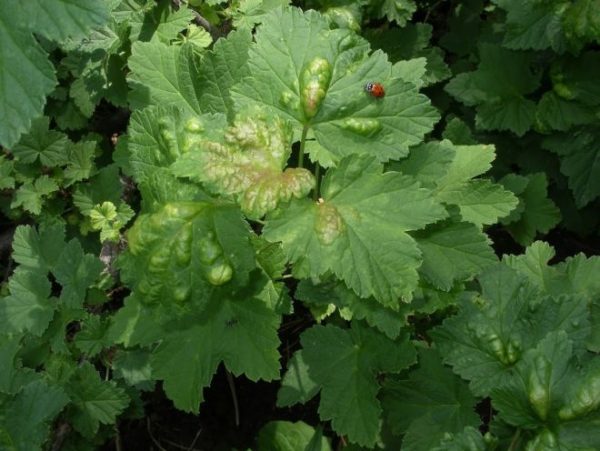
On the bushes of the white and red varieties the aphid usually settles:
- red gall;
- currant hairy.
Black same likes shoots gooseberry aphid.
Dangerous for sick plants and extremely favorable for aphids are such weather conditions as:
- dry;
- hot
- solar.
All the wonderful days for relaxing in the country, as if meant for barbecue and lawn cutting, are loved not only by humans, but also by aphids. It is constantly necessary to fight this pest, since the life cycle of an individual is very short, and may change during the summer season from 10 to 15 generations in one colony of insects.
The aphid settled on the currant is an insect very small, on average the length of the calf is only 2.2 mm. With close aggregation, the pests are similar to a spot of light grayish, yellow or green shades.
Aphids feed on the juice of currant leaves, glaring at them from the back side. Even a small settlement of these pests takes a lot of power from the bush, significantly reducing not only the yield, but also the growth and development of currants.
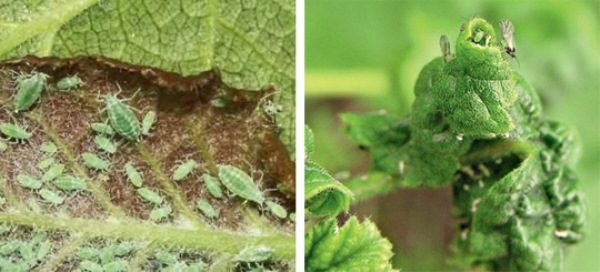
Waste of aphids is pad, or, as it is also called, honeydew - a favorite treat of ants. It is a common misconception that ants eat aphids, helping the gardeners to fight it. It's not like that at all. on the contrary ants carefully protect the pest colonies and even spread the aphids, transferring it to fresh shoots and neighboring bushes.
Aphids and ants are a natural symbiosis of species, therefore it is extremely important, starting a fight with aphids, to destroy anthills as well.
To get rid of the pest colonies by the following methods adopted by the people:
- noticing leaves with bulges on bushes, shoots with twisted lumps of leaves should be immediately, without delay, trim and burn;
- good help spraying bushes and the processing of each sheet of infusion of ash and shag, prepared in this proportion - 400-500 grams per 10 liters of water;
- gives a good effect manual washing of each sheet and then spraying the whole plant with a solution of soap and soda — plenty of soap and a tablespoon of soda per liter of water;
- poisonous celandine for aphidstherefore, having prepared an infusion in the proportion of 3.5-4 kg of freshly mown celandine per 10 liters of water, you can spray the bushes, like the already affected ones,and apparently healthy, but you need to wear gloves and a respirator, as the celandine can cause severe irritation;
- simply wash each leaf with soap and escape, the best is economic.
In addition to these widely accepted and fairly simple methods, pesticides and insecticides can be used against aphids, such as:
- vofatoks;
- karbofos;
- kinmiks;
- aktar;
- castle
The list of drugs offered to gardeners is quite large and diverse, but whichever one of them is chosen, the bushes will have to be sprayed three times:
- in the spring, before bud break;
- after the appearance of leaves;
- in the summer, about a month before picking berries (July - August, depending on the variety).
For preventive measures, to initially scare away aphids, it is good to plant plants next to the currant, which it does not tolerate:
- bow;
- dill;
- tomatoes;
- garlic;
- mint;
- parsley;
- basil;
- coriander;
- tansy;
- marigold.
What to do if currants dry?
There are many reasons for which the bushes may start to turn yellow and dry, but all of them can be divided into three categories:
- natural circumstances;
- pest control;
- plant diseases.
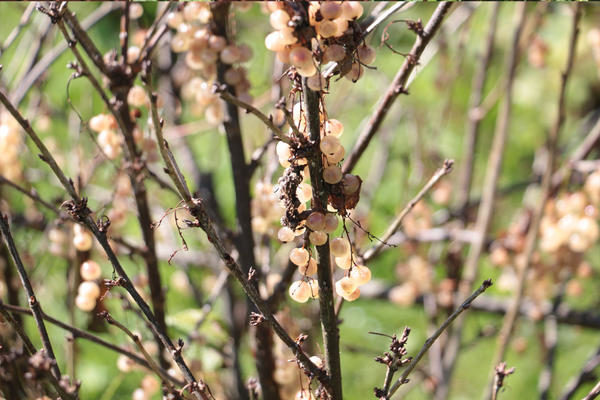
For natural reasons include weather, for example, drought. The wrong place in which the bush grows is too sunny and dry, or, conversely, moisture stagnation, which causes rotting of the roots.
Insects that harm currants, the most common cause of drying leaves. In addition to traditional parasites, ants and butterflies can cause plant ailments.
Diseases leading to the drying up of plants are usually tolerated by insects. The most frequent of them are:
- streaky and striped mosaic;
- anthracnosis, a fungal infection requiring immediate action;
- powdery mildew, both European and American;
- chalcosporosis;
- rust, both glass and columnar.
If the sources of currant drying in weather reasons, for example, in a hot and sunny summer, then fight with them is simple. It is only necessary to provide watering. They drink bushes a lot, from 1.5 to 2 x buckets per day. During the ripening of berries, the amount of water received by the plant should be increased to three buckets.
If the bush dries due to rotting of the roots, due to their flooding, which is typical of a very rainy summer, the actions should be as follows:
- pour earth under the plant;
- around the bush, at a distance of 50-60 cm, dig through the drainage grooves.
If the bushes dry through the fault of insects or diseases, then it is necessary to take appropriate measures.
Not every modern summer resident understands the types of insect pests or a variety of plant diseases. therefore Widely complex chemicals are very popular, such substances include:
- sulfur;
- phosphomide;
- karbofos;
- vitriol;
- Bordeaux liquid;
- phytosporin;
- foundation
Fungal infections, such as anthracnose, require the fastest treatment of the bush with fungicides.The causative agent of the disease, fungus, starts up in fallen leaves. That is why it is extremely important to clean the foliage on the plot and burn it. The disease itself is manifested in mid-summer, in the form of red-brown spots on the leaves. If the disease is not cured, the “rash” will seize all the leaves, eventually exposing the bush, and infect the neighboring plants.

As preventive measures against insects and diseases are very effective:
- currant and soil treatment under it 2% solutions of nitrophene or karbofos in the spring. Before bud break;
- periodic spraying during the summer of bushes base
Often the currant dries simply because the bush has already grown old. In this case, either you need to rejuvenate it with pruning, or dig it up, and, after disinfecting and fertilizing the soil, plant a new one.
To ensure that the currant is well fruited, not sick and not dried, is not so difficult. It is enough to observe some conditions:
- right choose a place for bushes, not too dry and without stagnant water;
- provide watering in drought;
- clean the leaves;
- prophylactically process plants;
- carefully monitor the condition bushes.
If you follow these simple rules, from year to year the currant will surely make you happy with large, juicy, tasty and very healthy berries.
